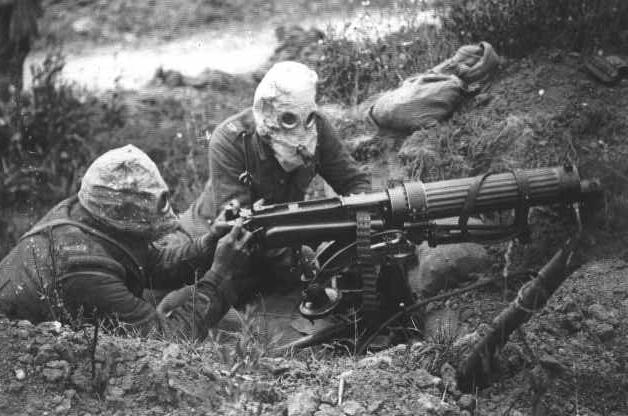The First World War, which began in 1914, swept the territory of almost all of Europe through the fire of battles and battles. This war involved more than thirty states with a population of more than a billion people. The war became the most grandiose in terms of destruction and human casualties in the entire previous history of mankind. Before the war, Europe was divided into two warring camps: the Entente in the person of Russia, France, the British Empire and the smaller countries of Europe and the Triple Alliance in the face of Germany, the Austro-Hungarian Empire, Italy, which in 1915 went over to the Entente, and also smaller European countries. The logistical superiority was on the side of the Entente countries, but the German army was the best in terms of organization and armaments.
In such circumstances, the war began. She was the first that can be called positional. Opponents, possessing powerful artillery, quick-fire small arms and defense in depth, were in no hurry to go on the attack, which foreshadowed huge losses to the advancing side. Nonetheless, fighting with varying success without strategic advantage took place in both main theaters of operations. The First World War, the Brusilov breakthrough in particular, played a significant role in the transition of the initiative to the Entente bloc. And for Russia, these events had rather adverse consequences. During the Brusilov breakthrough, all reserves of the Russian Empire were mobilized. General Brusilov was appointed commander of the Southwestern Front and had at his disposal 534 thousand soldiers and officers, about 2 thousand guns. The opposing Austro-German troops had 448 thousand soldiers and officers and about 1800 guns.

The main reason for the Brusilov breakthrough was the request of the Italian command to attract Austrian and German units in order to avoid the complete defeat of the Italian army. The commanders of the Northern and Western Russian fronts, Generals Evert and Kuropatkin, refused to launch an offensive, considering it completely unsuccessful. Only General Brusilov saw the possibility of a positional strike. On May 15, 1916, Italians suffered a grave defeat and were forced to turn with a request to expedite the offensive.

On June 4, the famous Brusilov breakthrough of 1916 begins, Russian artillery fired continuously at enemy positions for 45 hours in separate sections, which was when the rule of artillery preparation before the offensive was laid. After an artillery strike, the infantry went into the breakthrough, the Austrians and Germans did not have time to get out of the shelters and were captured. As a result of the Brusilov breakthrough, Russian troops wedged into the enemy’s defenses for 200-400 km. The 4th Austrian and German 7th armies were completely destroyed. Austria-Hungary was on the verge of total defeat. However, without waiting for help from the Northern and Western Fronts, whose commanders missed the tactical moment of advantage, the offensive soon stopped. Nevertheless, the Brusilov breakthrough resulted in salvation from the defeat of Italy, the preservation of Verdun by the French and the consolidation of the British on the Somme.